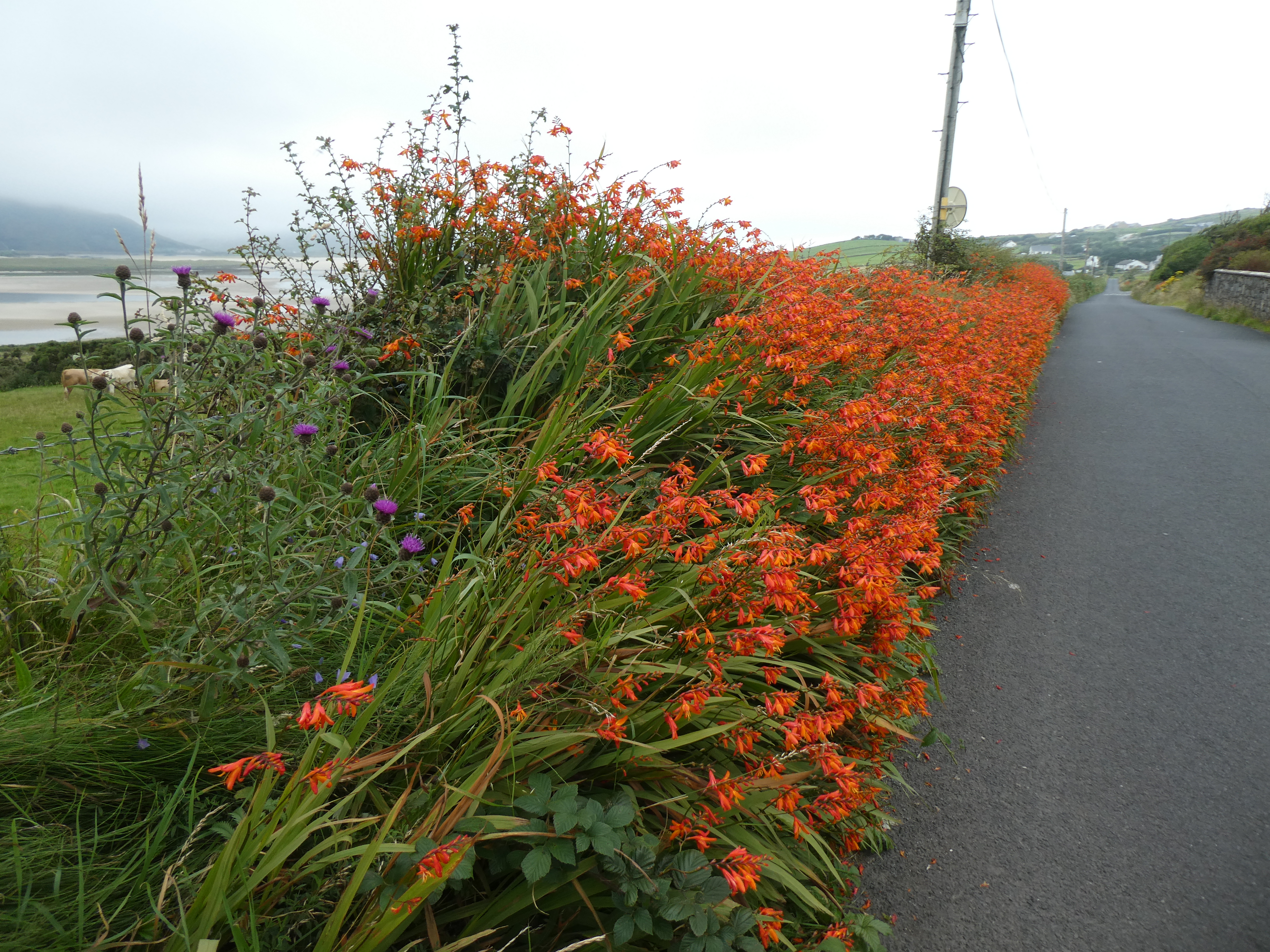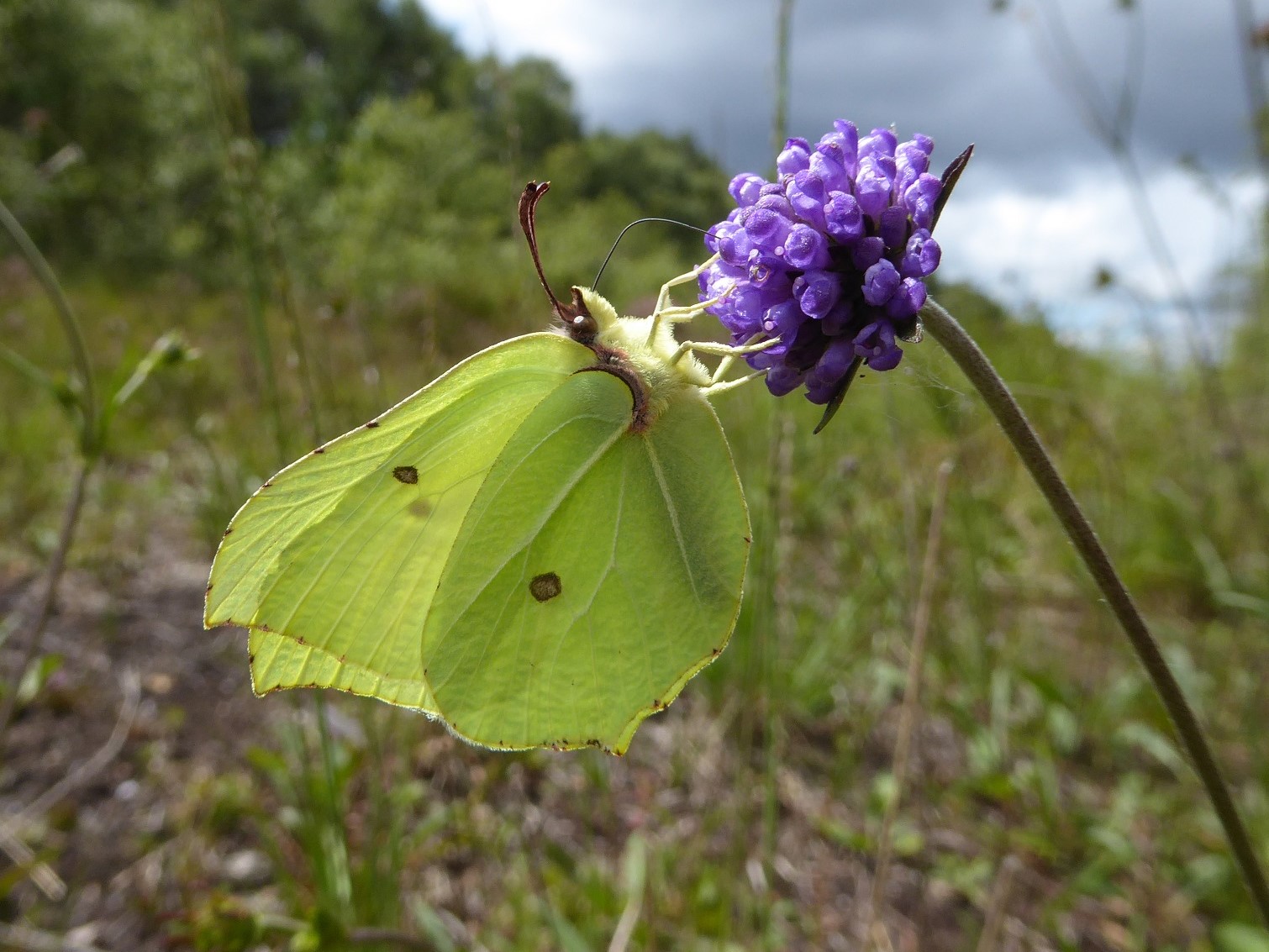Gardening is a great activity that builds health, pride in one’s home and offers insights into the world of nature. Unfortunately, some gardening has created massive biodiversity challenges which could easily have been avoided. Here we look at a few plants you should definitely avoid.
Montbretia Crocosmia x crocosmiiflora is a hybrid of a species originating from South America. Undeniably attractive, it is, unfortunately, extremely invasive. It escapes from gardens and is sometimes deliberately planted to beautify hedgebanks adjoining gardens.
The plant is not used for breeding by our butterflies or moths. Even worse, it grows in dense clumps that completely exclude native plants. It is becoming established in many places around our island, including in the County Clare Burren, in west Kerry, in Donegal, Kildare and many other areas, even in areas with low human population density. It is damaging many protected habitats, including Special Areas of Conservation on state-owned land. It spreads by the division of underground corms.
Recently I pulled up metre high clumps from a roadside in the Burren and observed that no other plant was present where the Montbretia was grown. It is displacing all flowering plants and grasses. I particularly noted that the highly attractive Tufted Vetch, used by the rare Wood White for breeding, was also absent from areas where Montbretia was established.

This threat must be tackled, by all of us. Avoid planting it in your garden-there are more attractive, butterfly-friendly native plants such as Devil’s-bit Scabious that you can use instead. If you have a weakness for it, never allow it to escape into the countryside.
If you see it in the hedges near your home and want to protect the environment, pull the clumps up-they are easy to pull up and the corms come with the rest of the plant. You must not put the material in the compost bin. It must go to landfill. If you are left with a large area of bare soil after the plants are removed, sow native seed from nearby by simply tossing it on the soil surface-do not bury the seed.
Another non-native that damages native hedges is Fuchsia magellanica ‘Riccartonii’. This originates from Chile and Argentina and is probably the hardiest of all the Fuchsia here. This plant is out of control in parts of the west of Ireland where it overwhelms native shrubs. It appears to be very difficult to remove without digging it up or treating the freshly cut main stem with glyphosate.
Another invasive that some gardeners love is Red Valerian. Again it is pretty and it is a good source of nectar. But it is highly invasive when it becomes established on free-draining soils and rocky areas such as limestone pavement where it can become dominant very quickly. It is currently established at Ailwee Mountain in County Clare where it is out-competing Common Bird’s-foot-trefoil, an important breeding plant for some moths and butterflies. It has taken hold at Bull Island, County Dublin, on the dunes which are especially noted for their orchids.
This plant can be pulled up but the roots can be hard to remove all the roots when it is established on limestone pavement.
Our wildlife has enough challenges to deal with without needlessly adding more problems in the form of invasive inedible non-native plants that displace important foodplants. Native plants are here for good reasons. They have existed alongside a suite of other plants and animals and formed important biological relationships which must not be disrupted.
If you want to plant flowers and shrubs in your garden, take a look at the species that occur naturally in your area and use these. The local native plants will add great wildlife value to your garden and you can make a real contribution to nature, both directly in your garden and indirectly in the wider area. You will also be caring for nature by not growing invasive non-native plants.
Our native trees and shrubs are beautiful and some are available in good garden centres. However, just because a garden centre sells plants does not mean it is a good idea to buy them. In our view, garden centres should not sell invasive species. While it is not illegal to plant such plants in your garden, it is illegal to introduce exotic (non-native) plants into the wild (Section 52 of the Wildlife Act 1976 as amended by Section 56 subsection 7 of the Wildlife Amendment Act 2000).
For nature, think native. Non-native plants can ruin habitats. This is happening worldwide as well as in Ireland. If we allow non-native plants to overwhelm our countryside, sights like this may become consigned to the past.

Free Offer
Devil’s-bit Scabious is a magnificent native perennial and grows happily in most garden soils. It flowers from August to October and delivers nectar to butterflies, moths, bees, etc. Its seed is eaten by Goldfinches and Lesser Redpolls. If you would like us to send you some Devil’s-bit Scabious seed, send a stamped, self-addressed envelop to Butterfly Conservation Ireland, Pagestown, Maynooth, Co. Kildare. Offer available while stocks last.

